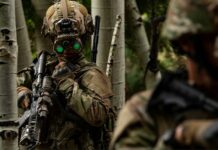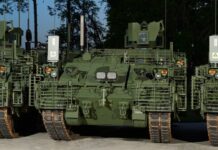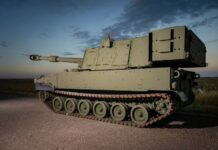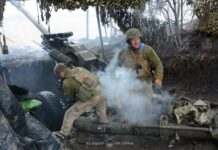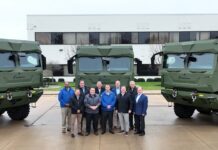The logistical need for water in modern conflicts is enormous. Various military operations in dry climate zones such as Iraq and Afghanistan require extensive water supplies.
Napoleon famously, if apocryphally, wrote that an army travels on its stomach. However, an army might even fight for a day or three without any food. But an army needs water every single day or the soldiers start to fall over.
Looking at the logistical requirements for water in modern conflict, it is easy to see that the demands are huge. Various military deployments in arid climates such as Iraq and Afghanistan have needed extensive deployment of support troops and contractors to ensure a viable water supply. Only a subset of the water requirements will require purification. Water for engine cooling, washing vehicles, decontamination, or field laundry is not likely to require the same level of purification as potable water. However, potable water for drinking, personal hygiene, heat casualty treatment, field catering, and medical uses adds up. Requirements will change based on the operating environment and climate.
It is important to understand the true scale of the requirements. The US Army has water planning guides that are well thought out and likely are very similar to those of other militaries. One easily available planning document published by the US Army’s Quartermaster Corps, and it gives interesting planning factors. The US Army tables give daily requirements per person in the deployed force. Based on the type of operation and climate, these requirements range from 24.9 litres to 58.8 litres of potable water per person per day.
What is the Threat?
The principal threat stems from waterborne diseases, such as bacteria, viruses, and parasites. A second threat is pollution by contaminants, both artificial (for example chemicals such as fertilisers, insecticides, fuels, etc.) and natural (for example mud and particles). The severity of the threat ranges from mild to critical. Some waterborne illnesses such as dysentery or cholera can level entire armies. Before the modern era, poor sanitation often killed more soldiers than weaponry did, and modern commanders forget those lessons at their peril. In the Vietnam War, disease from water was a serious consideration and was a leading cause of hospitalisation among American troops. However, serious medical and logistical planning during that war meant that cholera was ruled out as a health threat. Waterborne illness has also been a serious consideration in more recent conflicts in Iraq and Afghanistan. A US Army study shows that, across the US military deployments in Iraq and Afghanistan from 2001 to 2007, over a million person-days were lost due to diarrhoea. Food safety, various illnesses not related to water intake (for example flu) and other sanitation issues are a large portion of this total, but some of it will be from water sources. Water purification is also essential for various purposes beyond human consumption. Boiler plants do not work well with dirty water, for example.
A secondary, but not trivial, consideration is the quality of the water post-purification. Water that looks, tastes, or smells foul, even if it meets technical standards for safety, is not good for military operations. Soldiers will drink less of it than they might need. Hygiene may suffer. Morale will suffer if poor quality water makes food taste bad. This correspondent’s own experiences with over-chlorinated water during a summer of US Army training in Kansas were unpleasant indeed. Water doesn’t need to be tasty, but it needs to not appear to be foul.
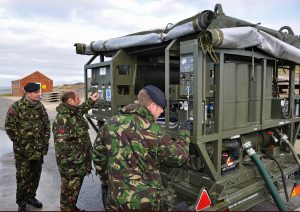
It should be noted that, although it does come up occasionally in defensive doctrine and manuals, the threat to water from CBRN attack is secondary. Biological warfare agents are, for the most part, the same part of the threat spectrum as naturally occurring waterborne threats, although it is possible that some biological warfare agents might be deliberately crafted for use in water supplies. Chemical warfare agents, such as nerve or blister agents, are a more esoteric threat against military water supplies. In general, the nerve and blister agents react with water over time, but the decomposition products are also inherently nasty substances that nobody would want to drink. Some chemical warfare agents do not readily dissolve in water. Sulphur Mustard, so-called “Mustard Gas” is actually not a gas, but an oily liquid. Drops of it may float on the top of water. Radiological and nuclear threats to water are largely in the form of particles that might contaminate lakes and rivers. Therefore, military water purification requirements must account for CBRN threats.
Chemical treatment of water is a time-honoured tactic. Soldiers can be issued with water purification tablets for treatment of locally collected water. Iodine compounds have a long history in this role. On a larger basis, chlorination of water is a long-established technique to make water safe. Once done with chlorine gas or various hypochlorite compounds such as calcium hypochlorite, newer forms of chlorination use safer chloramine compounds. Furthermore, chlorine compounds can be used to sanitise tanks and water storage bladders. Chemical treatment of water is a well established niche in military water supply. As the products used are largely generic, the list of products and suppliers in this segment is too fragmented and lengthy for serious comment here.
Chemical treatment of water, however, has problems. On an individual soldier basis, it requires training and discipline. Water purification tablets are a local stop-gap, not a solution to the dozens or hundreds of litres a day needed to support a modern military force. At a technical level, it addresses only part of the threat. Chemical treatment addresses bacteria, viruses, and parasites in water but does not remove particles or dissolved chemicals. Various chemical pollutants could be left in the water, as could things like radioactive particles. Or, for that matter, minerals that make the water unpalatable.
By far the most significant technology and family of products in this sector are reverse osmosis water purification units (ROWPUs). ROWPUs, to use the now-prolific US military nomenclature for them, are the workhorse of military water purification. Reverse osmosis is a superior technology for deployable water purification, as it is a scaleable technology. Reverse osmosis units range from the size of a suitcase to those as big as a house. They work on a principle of passing water through membranes that only allow water molecules to pass. Reverse osmosis units tend to have either “single pass” (one pass through the membrane), or “double pass” modes, depending on the quality of the water to be processed. They have a variety of filters on the front end to deal with the mud, muck, and particulates before the serious work at the membrane begins. In theory, a good reverse osmosis unit can take a bucket of mud damp with sea water, parasites, and Mustard Gas in the front end and squeeze out a glass of pristine drinking water at the back end. It should also be noted that reverse osmosis has also replaced older technologies for desalination on many naval vessels.

Reverse osmosis is not without its drawbacks. ROWPUs use a lot of power. For example, the 3000 gallon per hour ROWPU used by the US military in the 1990s used a 60 kilowatt generator. (Apologies to the European reader: the US military still uses – non-imperial – gallons). From the viewpoint of some logisticians, this merely means the requirement for litres of water is shifted over one column on their chart, to litres of fuel. But it does so at a greatly favourable ratio. The 60 kilowatt generator of the 3000 gallons per hour ROWPU’s uses about 5 gallons of diesel fuel per hour, thus equating to a 600:1 by volume ratio of water to diesel. For any logistician, this is a large gain.
Likewise, few of them are designed for continuous use. The 3000 gallon per hour ROWPU previously mentioned is quite robust, but even so is only designed to operate 20 hours a day instead of 24. They also require replacement of consumable parts, such as filters. As ROWPUs are complex machines with many working parts, both routine maintenance and emergency repair of breakdowns are important factors. Mean Time Between Failures (MTBF) statistics are usually closely held by the manufacturers, but complex machinery will have breakdowns and intervals out of service for routine maintenance. Also, the MTBF for generators supplying power to ROWPUs must be factored into planning. A US Marine Corps document refers to many generators having 24 day MTBF, so long-term provision of power to support water operations can be hobbled by power issues. These factors must be taken into account when planning water supply for ongoing operations. Finally, there is a waste stream produced by any ROWPU, as everything that comes out of the clean water goes out of another part of the apparatus as sludge. In some environments, the waste effluent from a water purification unit can be highly toxic and require special disposal.
ROWPUs can be fixed or mobile. Generally, the military ROWPU market is for mobile units, even though the large end of the ROWPU market is comprised of very large units that require special transport arrangements. Water storage and distribution are as important as water purification and should be considered as part of the overall approach to water purification. However, a detailed discussion of water containers, bladders, tanks, and trucks is beyond the basic scope of this article.
Looking around the world, the largest single market segment in military water purification is the US military, as with many types of military expenditure. Therefore, there is a large amount of technology and many products developed around US military requirements and budgets. These are then marketed by US producers to what they realistically but often patronisingly refer to as “the rest of the world” market. Scratch a ROWPU in the EMEA or Asia Pacific market and you might find an American MIL-SPEC somewhere. The trick, this author discovered, is to see if a given system is rated for gallons per hour (gph), the US metric of choice in measuring water output. 1 gph is equivalent to 3.785 litres per hour, or 0.832 imperial gallons per hour.
Product differentiation can be difficult in this area, as the basic output is the same – clean water. Differences between products built largely to the same specification can be slight: a wide variety of manufacturers make water purification systems for military use. Generally, anything for military requirements integrates removal of CBRN hazards into the specifications, whereas units built for civil use, such as disaster assistance, may not be rated for such use. Mostly, reverse osmosis handles such contingencies and lack of a specification for CBRN use is often due to a manufacturer not submitting a particular model for testing and/or not wanting to deal with the waste effluent.
First, there is the substantial American market, which is based on providing 600 gph, 3000 gph, and the newer, smaller “Lightweight Water Purification System” ROWPUs. Larger systems are often intended for shipboard or fixed installation usage. A basic survey of the ROWPU world shows a number of manufacturers making comparable products. AMPAC, a specialty manufacturer of water purification systems for military and civil customers, is based in Montclair, California, and produces the entire range of water purification systems, which start with suitcase-sized units that produce 10 gallons per day (gpd) all the way up to massive industrial scale 1,000,000 gpd units designed for installation on major facilities and bases. MECO, based in Louisiana, is a similar industrial player in the field, with every conceivable size of water purification device for the defence market in its portfolio. It should be noted that both AMPAC and MECO are specialty engineering companies with some military business, rather than defence contractors dabbling in water. The Pennsylvania based Terra Group, which also markets under the “Tactical Water” brand, has a product line that covers the US military requirements. Their Lightweight Water Purification System, used by the US military, is small and highly deployable and purifies 75 gph of salt water or 125 gph of fresh water. Many hundreds of systems have been procured by the US Marine Corps. The company also does larger systems, including a trailer-based 3000 gph system.
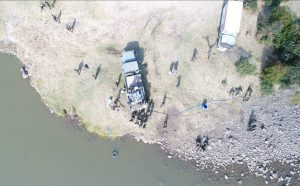
Non-American companies and customers are significant as well. Over the last few decades, deployments outside of Europe, often to arid climates, in support of various coalitions, alliances, and peace-keeping efforts have driven many European militaries to renew their emphasis on water logistics. The first Gulf War in 1991 saw some military allies of the USA turning up in the theatre of operations reliant upon US military water supplies, not all of which had been forecast by American logisticians. The UK military was faced with water needs in 2003 with the invasion of Iraq. The British Army was reliant on drilling boreholes in Afghanistan, and to a lesser extent in southern Iraq. The Yorkshire-based firm ACWA produced equipment for urgent deployment in 2003. The firm Stella-Meta, in Hampshire provides a range of water purification equipment for UK military requirements.
Force projection into places with little existing water infrastructure is a requirement in many militaries. Berkefeld, a Germany-based arm of the French conglomerate Veolia produces 6 different mainstream products. For example, their BERKEFELD M6 will process up to 6 cubic metres of water an hour. (Cubic metre per hour becomes the standard metric outside US defence circles: one cubic metre equals approximately 264 US gallons.) The German firm Kärcher Futuretech, well known in CBRN circles for its decontamination products, produces about ten different ROWPU units for military or disaster response use. They also have filtration units and chlorination systems, for situations not requiring a full reverse osmosis system, as well as a variety of water storage and distribution products.
Outside North America and Europe there are both markets and players. Examples are too many to list here, but Tecimer (Turkey), Rowater (Australia), and ELW Global (South Africa) are some examples out of many. Bulk Handling Australia, while not a water purification provider, is a significant producer of water storage solutions for military use.
What does the future hold? Reverse osmosis is a stable and mature technology. Development of lighter, more power-efficient systems is likely as the established manufacturers seek to effect incremental improvements. Perhaps the most interesting technology is to extract water from the air. The Israeli firm Water-Gen is pushing the frontiers in this sector, and is one to watch. While such systems will never achieve the volumes of water that reverse osmosis can produce, they will fill a valuable niche in situations where little or no surface or underground water can be found.
Dan Kaszeta’s is Managing Director at Strongpoint Security Ltd. and a regular contributor to ESD.




